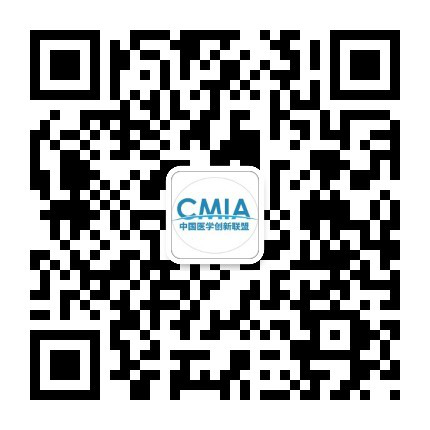[罂粟摘要]在已建立的全膝关节置换术多模式镇痛方案中加入右美托咪定、氯胺酮、地塞米松和神经阻滞无益处
关注罂粟花,共同学习麻醉学最新文献!
在已建立的全膝关节置换术多模式镇痛方案中加入右美托咪定、氯胺酮、地塞米松和神经阻滞无益处
贵州医科大学 麻醉与心脏电生理课题
翻译: 黄祥
编辑: 严旭
审校: 曹莹
背景:治疗严重疼痛的阿片类药物节约型多模式镇痛方案可以促进全膝关节置换术后的恢复。假设在多模式镇痛方案中加入五种静脉药物和区域阻滞干预措施,可以进一步减少阿片类药物的消耗。
方法:在双盲的情况下,78例接受选择性全膝关节置换术的患者被随机分配至对照组(n=39),接受脊髓麻醉与鞘内吗啡、关节周围局部麻醉浸润、静脉注射地塞米松和单次内收肌管阻滞;研究组(n=39),接受同样的镇痛疗法和第五种额外干预:膝关节后部胭窝动脉和关节囊之间进行局部麻醉浸润、术中静脉注射右美托咪定和氯胺酮、术后再次静脉注射地塞米松、再进行两次内收肌管阻滞。主要结局是术后24小时阿片类药物的消耗量;次要结局是其他镇痛药的使用情况、患者恢复情况、功能结果和不良事件。
结果:24小时内各组之间阿片类药物的消耗量无差异(P=0.189)。疼痛评分、恢复质量或达到康复的时间无明显差异。研究组的低血压发作更为频繁(P=0.010)。
结论:在进行关节周围局部麻醉浸润、鞘内吗啡、单次内收肌管阻滞和静脉注射地塞米松的情况下,增加了第五种镇痛干预措施。在膝关节后部胴窝动脉和关节囊之间进行局部麻醉浸润,静脉注射右美托咪定、静脉注射氯胺酮、额外静脉注射地塞米松剂量和反复内收肌管阻滞,都未能进一步减少阿片类药物的消耗或降低疼痛评分,也未能改善全膝关节置换术后的功能恢复。
原始文献来源:
Muñoz-Leyva F,Jack JM,Bhatia A, et al. No Benefits of Adding Dexmedetomidine, Ketamine, Dexamethasone, and Nerve Blocks to an Established Multimodal Analgesic Regimen after Total Knee Arthroplasty. Anesthesiology. 2022;137 (4):459-470.
英文原文:
No Benefits of Adding Dexmedetomidine, Ketamine, Dexamethasone, and Nerve Blocks to an Established Multimodal Analgesic Regimen after Total Knee Arthroplasty
Abstract
BACKGROUND An optimal opioid-sparing multimodal analgesic regimen to treat severe pain can enhance recovery after total knee arthroplasty. The hypothesis was that adding five recently described intravenous and regional interventions to multimodal analgesic regimen can further reduce opioid consumption.
METHODS In a double-blinded fashion, 78 patients undergoing elective total knee arthroplasty were randomized to either (1) a control group (n = 39) that received spinal anesthesia with intrathecal morphine, periarticular local anesthesia infiltration, intravenous dexamethasone, and a single injection adductor canal block or (2) a study group (n = 39) that received the same set of analgesic treatments plus five additional interventions: local anesthetic infiltration between the popliteal artery and capsule of the posterior knee, intraoperative intravenous dexmedetomidine and ketamine, and postoperatively, one additional intravenous dexamethasone bolus and two additional adductor canal block injections. The primary outcome measure was 24-h cumulative opioid consumption after surgery and secondary outcomes were other analgesics, patient recovery, functional outcomes, and adverse events.
RESULTS Opioid consumption was not different between groups at 24 h (oral morphine equivalents, mean ± SD; study: 23.7 ± 18.0 mg vs. control: 29.3 ± 18.7 mg; mean difference [95% CI], -5.6 mg [-2.7 to 13.9]; P = 0.189) and all other time points after surgery. There were no major differences in pain scores, quality of recovery, or time to reach rehabilitation milestones. Hypotensive episodes occurred more frequently in the study group (25 of 39 [64.1%] vs. 13 of 39 [33.3%]; P = 0.010).
CONCLUSIONS In the presence of periarticular local anesthesia infiltration, intrathecal morphine, single-shot adductor canal block and dexamethasone, the addition of five analgesic interventions-local anesthetic infiltration between the popliteal artery and capsule of the posterior knee, intravenous dexmedetomidine, intravenous ketamine, an additional intravenous dexamethasone dose, and repeated adductor canal block injections-failed to further reduce opioid consumption or pain scores or to improve functional outcomes after total knee arthroplasty.
不感兴趣
看过了
取消
不感兴趣
看过了
取消
精彩评论
相关阅读





 打赏
打赏


















 010-82736610
010-82736610
 股票代码: 872612
股票代码: 872612




 京公网安备 11010802020745号
京公网安备 11010802020745号


